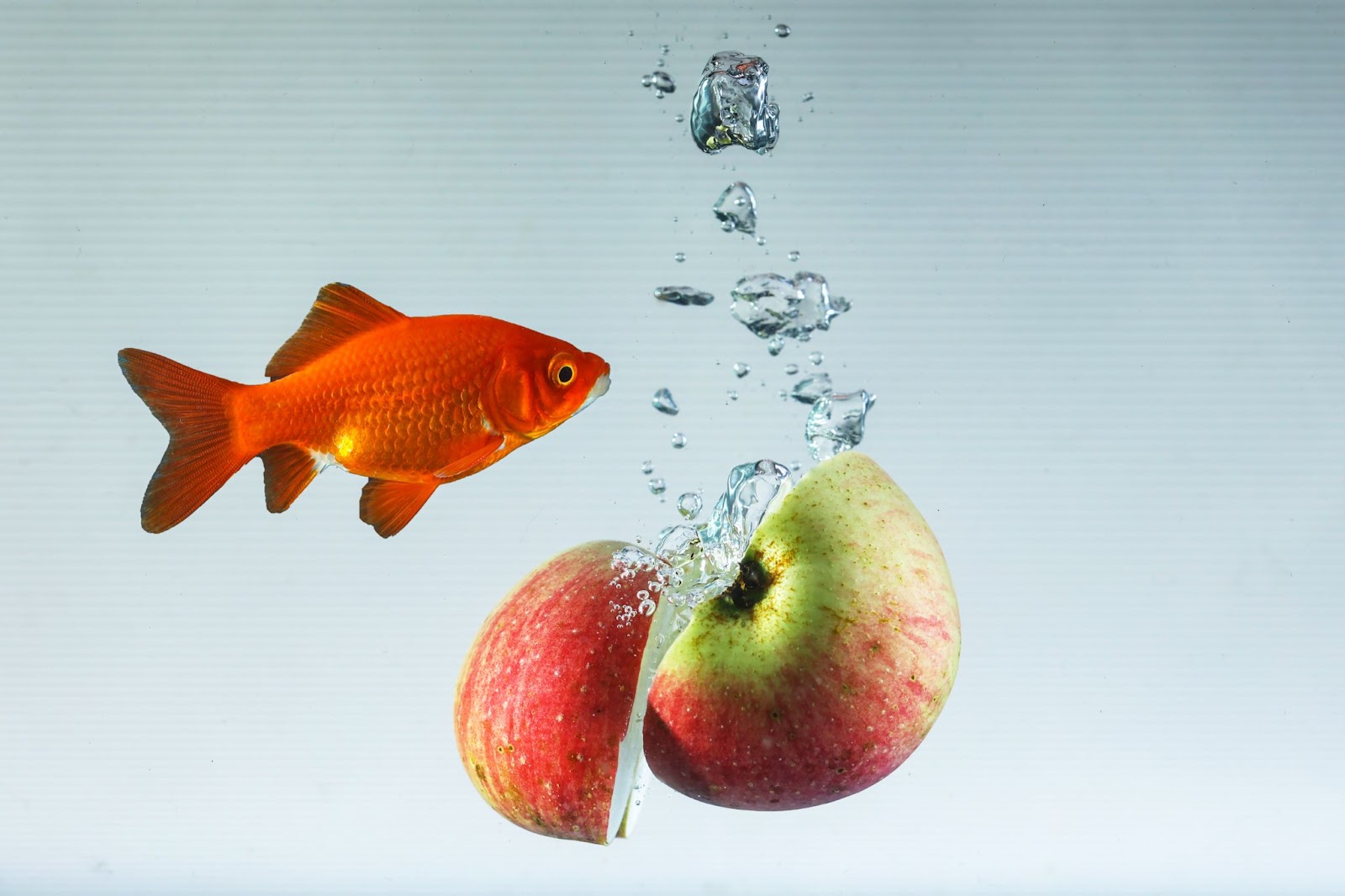When pondering whether can you eat goldfish, one must consider various aspects of this common household pet before deeming it a dish. Goldfish, the ornamental treasures of home aquariums worldwide, have a history that extends beyond their decorative appeal. It might surprise some to know, goldfish are indeed edible and were once raised for consumption. However, transforming goldfish into a culinary delight is not as common or straightforward as one might think.
Goldfish belong to the family of fish known as carp, a species with a longstanding reputation on dinner plates across various cultures. Their consumption dates back centuries, particularly in regions of Asia where they were selectively bred for both their beauty and taste. Yet, one must ask – how does the taste of goldfish stand up to culinary standards today? Well, the taste of goldfish is typically bland and is heavily influenced by their environment, which can often result in a muddy or undesirable flavor.
In terms of preparation, goldfish are not your typical choice of protein in modern culinary use. The The little size and hard design of goldfish make them not so much engaging but rather more serious when contrasted with well known food fish like trout or salmon. Also, one should consider security and moral contemplations while consuming these elaborate fish, which are normally treated with synthetic substances and anti-toxins ill suited for human utilization.
In spite of their edibility, the wellbeing chances related to consuming goldfish can be huge. These reach from possible poisons and parasites, which are pervasive in ineffectively kept aquariums, to microorganisms and other unsafe substances. According to a wellbeing viewpoint, consuming goldfish might present a bigger number of dangers than remunerations, supporting their continued job as treasured pets instead of as fixing.
Besides, with a developing consciousness of creature government assistance and moral contemplations encompassing the utilization of pets, deciding to eat goldfish could prompt an ethical issue for some. The subject of goldfish utilization shifts from can you to would it be a good idea for you, outlining the discussion around regard for these creatures as conscious creatures instead of only a wellspring of food.
Overall, while the answer to can you eat goldfish remains a technical yes, practical, health, and ethical considerations suggest that goldfish are better suited to our fish tanks than to our dinner plates. As such, it seems prudent to appreciate the vibrant life and aesthetics of goldfish, allowing them to swim freely as the ornamental delights for which they were bred.
The Taste Test
When it comes to unusual culinary experiences, some may wonder, can you eat goldfish, and if so, what do they taste like? Goldfish, by their very nature, absorb the flavors of their surroundings, reflecting a taste profile that is more environmental than intrinsic. Delving into the flavor nuances of goldfish requires an understanding of their habitat, diet, and the potential impact these factors have on their palatability.
Goldfish have been domesticated for centuries, hailing from the carp family, which is known for its muddy, sometimes off-putting taste. Carp, a staple in many cultures, can be prepared in a way that mitigates the earthiness, and this process extends to goldfish as well. Yet, despite culinary efforts, goldfish commonly retain flavors from their generally less-than-pristine captive environments, leading to a taste that might not appeal to the conventional palate.
The flesh of a goldfish, beneath the scales and fins, is considerably bland in flavor compared to more popular edible fish such as salmon or trout. The texture also differs, presenting a challenge in achieving a pleasant culinary experience. It’s no wonder that eating goldfish is not mainstream; the effort involved in their preparation for consumption hardly seems worth the outcome when far more flavorful and texturally satisfying fish are readily available.
To those still curious about incorporating goldfish into their diet, it’s pivotal to address both health concerns and culinary execution. Any goldfish intended for consumption must be sourced from clean, toxin-free environments and properly cooked to eliminate the risk of bacteria and parasites. The art of cooking goldfish, if one dares to try, lies in thorough cleaning, appropriate seasoning, and careful cooking methods designed to enhance what little flavor exists.
From a culinary perspective, there are far more rewarding fish to experiment with in the kitchen. For an immersive experience with the smallest members of the aquatic world, consider visiting The Smallest Aquarium Fish page to explore other ornamental species. The conclusion of The Taste Test for can you eat goldfish points firmly in the direction of observing these charming creatures in their aquatic homes, rather than on our dinner plates.
Edible or Not
When faced with the question, “Can you eat goldfish? ” ” the answer isn’t an easy sure or no. This ornamental fish, which graces many aquariums, does indeed come from a lineage of edible carp.
Initially bred for their vibrant colors rather than their flavor, goldfish may not seem like the go-to option for culinary endeavors. Despite this, it is important to recognize that in some cultures, particularly in Asia, carp and their relatives are routinely consumed.
However, from a traditional Western perspective, goldfish are considered pets rather than food. This classification brings forward ethical considerations and animal welfare concerns, especially for those who treasure goldfish as companions in their home aquariums. Eating pet goldfish could be seen as akin to consuming any other domesticated animal which is typically not earmarked for such purposes.
Focusing on the health and safety aspects, goldfish may harbor harmful bacteria or parasites that are unfit for human consumption without proper cooking methods. Also, the environments they are kept in may introduce toxic substances into their diet that could accumulate over time, which would then be passed on to humans.
What’s more, the discussion around goldfish consumption is not straightforward due to the lack of specific guidelines on cooking goldfish. Unlike widely-eaten fish species, there is little available information on how to properly prepare goldfish to ensure they are safe to eat. Consequently, health concerns may arise from incorrect preparation or cooking of this unusual aquatic dish.
In summary, while you could technically eat goldfish, it is not a conventional practice, at least outside of certain cultural practices. Understanding the ethical, health, and safety implications is critical before considering goldfish as a dish, which is typically not recommended.
Health Risks Unveiled
When pondering whether can you eat goldfish, it’s not just about the legality or the possibility but more crucially, about the potential health risks involved. Goldfish are not typically bred for consumption, rather they are cultivated as ornamental pets, which brings forth serious concerns regarding their safety as food.
Firstly, goldfish may carry bacteria and parasites that are harmful to humans. In an environment not controlled for food safety, such as home aquariums or decorative ponds, goldfish may harbor pathogens like Salmonella or E. coli. Consuming these can result in food poisoning, gastrointestinal distress, or more severe health complications.
Additionally, goldfish sometimes accumulate toxic substances in their bodies due to the quality of water in which they live. This includes high levels of nitrates and ammonia from insufficiently cleaned tanks or ponds. Such toxins pose a direct risk to human health when ingested.
Concerns about safe consumption practices arise considering the lack of established guidelines for cooking methods for goldfish. Unlike standard seafood, there is no mainstream culinary knowledge about proper cooking temperatures or preparations to ensure any potential pathogens are neutralized.
The ethical considerations and animal welfare should also be factored into the discourse on goldfish consumption. As ornamental fish, goldfish are bred for visual enjoyment, and consuming them for food raises moral questions about the treatment of pets versus livestock.
In the nutritional context, goldfish do not provide any unique nutritional value that would make them a better choice over other readily available and safely consumable fish. This further bolsters the argument against their consumption.
Eventually, while the response to could you at any point eat goldfish could in fact be indeed, the related wellbeing dangers and absence of culinary help pursue them as an unfortunate decision for consideration in any eating routine. For those intrigued by fish as a dietary decision, there are numerous more secure and more moral choices accessible that can offer heavenly flavors and medical advantages, without the potential risks that goldfish present.
The reality is that, despite the fact that eating goldfish is conceivable, it ought not be viewed as a prescribed or safe practice because of critical wellbeing concerns. Your best bet is to admire goldfish for their beauty and personality as a beloved aquarium resident, rather than a dish on the dinner table.
Cooking the Unusual
When pondering whether can you eat goldfish, adventurous culinary enthusiasts may entertain the idea of cooking these ornamental fish. Yet, goldfish are not commonly recognized within culinary circles as a traditional choice for consumption. Before considering goldfish as food, it’s crucial to understand their typical habitat and the implications of introducing such an unconventional ingredient into your diet.
Goldfish were originally kept for their beauty and serenity, and transitioning to viewing them as a dish can be quite unconventional. If one chooses to pursue cooking goldfish, several factors must be taken into account, such as the potential presence of bacteria, parasites, and toxic substances which are often associated with aquarium fish.
Furthermore, the ethical considerations around the consumption of pets such as goldfish should not be overlooked. These fish have been bred as ornamental fish, not for their nutritional value or culinary potential. The idea of eating goldfish might also be influenced by cultural practices; in some traditions, fish similar to goldfish are indeed raised as food. However, it’s important to differentiate between goldfish and species typically raised for consumption, like carp.
Cooking goldfish might require specialized knowledge in fish preparation to ensure food safety. Traditional cooking methods for fish might not be directly transferable to goldfish due to their unique biology and the conditions in which they are usually kept. Those willing to explore this pathway should be informed about the specific dietary needs and potential health concerns linked with the consumption of aquarium fish.
In conclusion, while one technically could entertain cooking goldfish, understanding the myriad of risks and the unusual nature of this choice is essential. Deciding to include the goldfish in one’s diet is a complex intersection of ethics, health considerations, and culinary logistics, prompting most to decide against it and perhaps leaving the goldfish to fulfill their role as delightful companions in the tranquility of an aquarium.
Ethical Eating
When considering the question, “Can you eat goldfish,” the answer extends beyond simple culinary curiosity to delve into the realm of ethical considerations. Ethical eating encompasses more than choosing foods for nutritional value; it enters the domain of animal welfare and environmental impact.
Goldfish, commonly seen as ornamental fish, hold a special place in the hearts of many pet enthusiasts. Renowned for their vibrant colors and playful behavior in aquariums, goldfish are considered companions rather than a food source. The transition from tank to table raises questions about the appropriateness of consuming animals bred for companionship.
The debate magnifies when considering the conditions under which aquarium fish are raised. Given that goldfish are not farmed with the intention for them to be eaten, their diet and environment might not meet the safety and quality standards of fish bred for consumption. Therefore, eating a goldfish could expose one to unwanted health risks associated with unregulated breeding practices.
In various cultures, certain fish serve traditional culinary functions; however, goldfish have not made significant inroads into the culinary world. This absence from the culinary scene strengthens the argument that goldfish are not seen primarily as food items. Within the cultural context, this shaping of perception is crucial to understanding the ethical boundaries of diet.
For those who treat goldfish as part of the family, the thought of dining on them might provoke ethical qualms. Animal welfare advocates often argue that such practices undermine the intrinsic value of life and the respect owed to animal companions. This outlook challenges the primary keywords, pushing us to reevaluate “can you eat goldfish” within a broader ethical framework rather than simply as a matter of possibility.
At the core of ethical eating is the principle of harm reduction, to both animals and the environment. Considering that goldfish are mostly bred and sold for enjoyment, the act of killing these creatures for an unconventional, and potentially unsafe, dining experience would seem to conflict with this principle.
Ultimately, while technically possible, goldfish consumption skirts the boundaries of responsible and respectful treatment of animals. As a goldfish care website, The Goldfish Tankpromotes the careful consideration of the ethical implications that come with the question, “Can you eat goldfish? ” Our responsibility to factual, participating material underlines that while you could, perhaps the underlying question is whether you should.
Cultural Culinary Curiosities
When broaching the subject of whether can you eat goldfish, one cannot overlook the diverse culinary contexts in which different cultures view this ornamental fish. Across various civilizations, goldfish have primarily been seen as a decorative species rather than a culinary element. However, their origin species, the carp, has had a long history on the dinner plates of many Asian and European countries. The cultural norms and practices surrounding what is considered edible are reflected deeply in the case of goldfish.
In China, where goldfish were first domesticated, they have been symbols of prosperity and luck rather than food. It is in stark contrast to the culinary use of their larger relatives, the common carp, which are often farmed for their meat. This cultural significance carries over to many other regions where the goldfish is seen not as a potential ingredient but as an aquarium inhabitant or a pond adornment.
Despite the possible differences in regional tastes and traditions, there is a near-universal understanding of the ethical considerations and animal welfare issues entailed in consuming pets and ornamental fish. Goldfish, specifically, have become widely recognized as a pet that brings joy to households and not as a source of sustenance.
Moreover, incidents of goldfish consumption are typically reported not as a culinary trend but as part of ritualistic or competitive scenarios, which are in themselves steeped in ethical debates. The conversation around can you eat goldfish often converges on the point that just because something is technically edible, does not mean it aligns with socially acceptable or responsible practices.
In conclusion, the culinary curiosities that surround the concept of eating goldfish remain just that—a curiosity rather than a common practice. They serve as a lens to view how different societies interact with the animal world, drawing lines between what we consider to be companions versus cuisine.
Safe Consumption Guidelines
When pondering whether can you eat goldfish, one should be well-informed about the safe consumption guidelines. Goldfish consumption is not a common practice, primarily due to the pet status of these creatures, and they are not typically regarded as food in most cultures. However, from a purely dietary standpoint, goldfish are technically edible. To ensure safe consumption, strict guidelines must be established and followed meticulously.
First and foremost, it is critical to source goldfish from environments that are free of toxic substances. Goldfish can accumulate harmful contaminants from their habitats, including heavy metals, bacteria, and parasites. Therefore, fish from clean and well-maintained tanks or ponds not exposed to pollutants are paramount for potential culinary use. It’s worth noting that goldfish — often kept as ornamental fish — are not raised for consumption, which means they may have been exposed to chemicals harmful to humans if ingested.
Secondly, proper fish preparation is essential to reducing health risks. This includes thoroughly cleaning the fish, cooking at the right temperatures to kill any present parasites, and ensuring that all parts of the fish that are unsafe to eat, such as certain organs, are properly discarded. Knowledge of cooking methods is crucial, as goldfish have a different texture and fat content compared to commonly eaten fish. Consulting with a culinary expert or a chef familiar with preparing such fish can be valuable.
Next on the list is the ethical consideration. Before turning to goldfish as a source of food, one should ponder the ethical implications of eating a pet species, often bred for their decorative appearance rather than their nutritional value. Ethical considerations around animal welfare, especially concerning ornamental fish, should be at the forefront of such a decision.
- Ensure that the goldfish is sourced from a pollution-free environment.
- Understand the potential health risks, including the presence of bacteria and parasites.
- Follow strict fish preparation protocols to minimize the risk of transmitting diseases.
- Learn about the proper culinary techniques to cook goldfish safely.
- Consider the ethical implications of consuming a traditionally ornamental pet.
Conclusion
Unlike food fish such as salmon or trout, goldfish may not offer the same levels of beneficial nutrients. Also, it’s crucial to be aware of local regulations and laws pertaining to the consumption of ornamental fish, as they can vary significantly depending on the region.
Ultimately, while goldfish are not poisonous and they can be prepared for eating, it is not recommended due to the potential health risks, lack of established culinary practices, and ethical concerns. Safe consumption of these pet fishes is theoretically possible but fraught with complications that make it an impractical dietary choice. A balanced approach to the topic respects both the fish’s conventional role as a companion animal and the pursuit of food safety.


